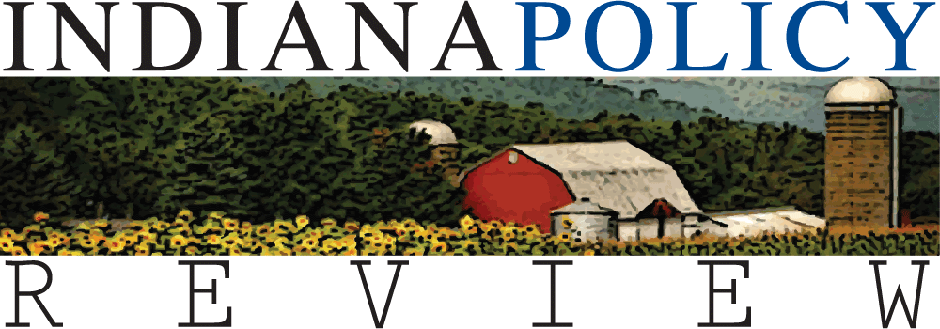Schansberg: Gerrymandering
by Eric Schansberg, Ph.D.
“Gerrymandering” is always a possibility in a republic, but sometimes the topic moves to the front burner. We’re in one of those moments now. Last month, the Texas GOP stirred the pot with its efforts to “redistrict” and some Democrat leaders responded with angry rhetoric and promises to retaliate. (Indiana Republicans are considering something similar.)
“Redistricting” is the practice of redrawing the geographical lines that define a political district, given changes in national and state populations. These changes are measured at the beginning of every decade through the work of the U.S. Census Bureau.
Consider the 435 seats in the U.S. House of Representatives. If a state’s population grows/shrinks enough with respect to the national population, a state will gain/lose at least one seat and district lines must be redrawn. But even if the number of seats remains the same, lines are likely redrawn as population shifts within the state — from births and deaths, immigration and emigration.
Six states have one district, so they can’t redistrict. In 25 of the more populous states, lines are redrawn by the state legislature (often approved by the governor). In the other 19 multi-district states, an independent or bipartisan group is used to limit political shenanigans.
“Gerrymandering” is the practice of drawing these lines for political purposes. (The word was created by merging “salamander” with the name of the Massachusetts governor who did this in 1812, Elbridge Gerry.) But there are some inherent tensions in such efforts. For example, if there are 600 GOPers and 400 Democrats in a state with ten districts, you could put the 600 GOPers in six districts and the 400 Democrats in four districts: six seats for the GOP and four for the Democrats. This would create 10 utterly “safe seats” which lack political diversity and allow each party to field less impressive candidates.
You could also put 60 GOPers and 40 Democrats in each district, creating 10 GOP seats that would be relatively safe, but far more politically diverse and potentially competitive. As members of a political party draw district lines, they have to wrestle with the tradeoff between more seats on average with greater political risk and fewer seats that are safer.
Political partisans often (naively) imagine that their party leaders are far more virtuous than those in the other major political party. But it should be little or no surprise to learn that gerrymandering is both bipartisan and not all that pervasive at the federal level. With the institutional structures in play, we might expect more trouble when lines are drawn by partisan legislatures, but this activity is still regulated by the courts. And we wouldn’t expect many politicians to passionately aim for another seat or two, while looking nakedly partisan and increasing the likelihood of defeat in more competitive seats. (Politicians and bureaucrats usually look to reduce risk, not increase it.)
Still, gerrymandering does exist. One way to perceive it is to look at the political map. For two terrific examples, check out the 13th and 17th districts in Illinois.
Looking at the national numbers, the overall vote percentage (49.8 percent GOP vs. 47.2 percent Dem in 2024) implies a slight partisan gerrymandering advantage to the Dems, given that the GOPs only has a slight seat advantage in Congress (220-215). And in October 2025, National Review reported that the GOP controlled state government in 23 states, with 59.3 percent of the House vote and 75 percent of the seats. But in the 17 states controlled by Democrats, their House candidates got 56.7 percent of the vote and 77.7 percent of the seats.
Looking at each state and comparing seats held by each party with the vote percentage received by House members and by President Trump, I only see a handful of cases where the numbers reflect the potential for gerrymandering. Some observations of note:
- Of the nine states with two or three districts, three raise a red flag (all of which favor Democrats): Maine with a 7-12 percentage point Democrat voter advantage and both seats (despite an “independent process”); New Hampshire with a 3-6 percent Democrat advantage and both seats; and New Mexico with a 6-10 percent Democrat advantage and all three seats.
- Of larger states: Wisconsin advantages the GOP (only a 1-3 percent voter advantage, but 6-2 on seats) and Illinois strongly advantages the Democrats (8-11 percent advantage, but a whopping 14-3 on seats). Despite “independent” processes, Colorado advantages the GOP (11-15 percent Democrat advantage, but 4-4 on seats) and New Jersey benefits the Democrats (merely a 6-9 percent advantage, but 9-3 on seats).
- Finally, in the Deep South, race-based gerrymandering may help with African-American representation, but hurt Democrats overall. (SCOTUS will soon wrestle with the constitutionality of this in Louisiana vs. Callais.) For example, in Georgia and North Carolina, the GOP’s 3-8 percent advantage translates into an impressive 19-9 seat advantage.
Gerrymandering is probably a secondary concern, but certainly a shiny object for the media and political partisans. It can be hoped that politicians and their partisan enablers will devote more energy to bigger concerns: finding good candidates and courageously leading us through challenging problems and difficult policy choices.
D. Eric Schansberg is Professor of Economics at Indiana University Southeast, the author of “Poor Policy: How Government Harms the Poor,” and an adjunct scholar of the Indiana Policy Review.

Comments...